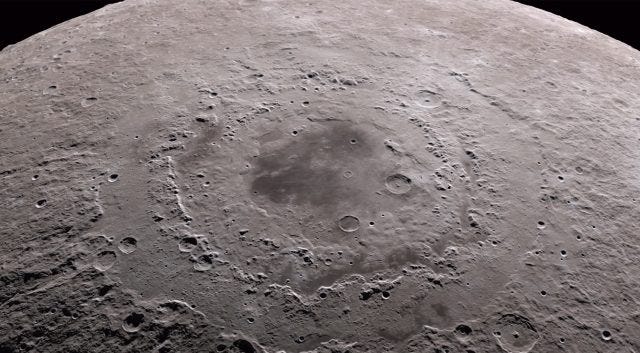Discovering the Moon's Hidden Metal: New Insights from NASA
Written on
Chapter 1: The Moon's Metal Mystery
For years, scientists have been intrigued by the Moon’s surprisingly low levels of metal. Given that the Moon is believed to have formed from debris ejected from Earth, it raises the question: shouldn’t it have a similar composition? NASA's Lunar Reconnaissance Orbiter (LRO) may have finally uncovered a potential answer: the metal could be located deep beneath the lunar surface.
The exact origins of the Moon remain a topic of debate, although many scientists subscribe to the collision hypothesis. This theory posits that a Mars-sized planetoid collided with the early Earth billions of years ago, ejecting substantial amounts of the Earth's crust into space, which eventually formed the Moon.
However, the Moon's visible chemical makeup complicates this theory. The lunar highlands, which appear as bright regions, are noted for their lower metal content compared to Earth. In contrast, the darker maria exhibit higher metal concentrations, even though both formations are believed to have originated around the same period.
Recent findings from the LRO are shedding light on this conundrum, primarily through the use of an instrument known as the Miniature Radio Frequency (Mini-RF). This tool measures the dielectric constant, which assesses the electrical properties of materials in comparison to a vacuum. Initially designed to search for water ice in craters, the Mini-RF can also identify metals.
According to a new study, the dielectric constant on the Moon increases with crater size. Craters measuring between 1 and 3 miles (2 to 5 kilometers) in diameter exhibited higher metal content based on LRO observations, although this trend plateaued around craters measuring 3–12 miles. The research team suggested that the top layer of the Moon may be deficient in metal oxides, but that these materials become more concentrated at greater depths.

To validate their hypothesis, researchers compared their findings with existing metal oxide maps derived from missions like Japan’s Selenological and Engineering Explorer (SELENE) and NASA’s Lunar Prospector. The results corroborated their observations, indicating that larger craters possess greater metal concentrations. This information may also align with findings from NASA’s Gravity Recovery and Interior Laboratory (GRAIL), which suggested the presence of dense materials deep within the Moon.
While these findings are promising, the research team is cautious about declaring this mystery resolved. The next phase involves conducting similar analyses in the Moon’s southern hemisphere to assess whether the geological characteristics of the craters align.
Now read: NASA Posts Stunning 4K Tour of the Moon, The Moon May Still Be Geologically Active, The Formation of the Moon May Have Stretched the Earth Into a Potato
Chapter 2: Implications of the Findings
The first video titled "Scientists have finally discovered what's inside the Moon!" delves into the recent discoveries regarding the Moon’s hidden metal, exploring how these findings could reshape our understanding of lunar geology.
The second video, "Scientists Finally Know What's Inside the Moon. Not what you think," further examines the implications of the new data and how it challenges traditional views on the Moon's composition.